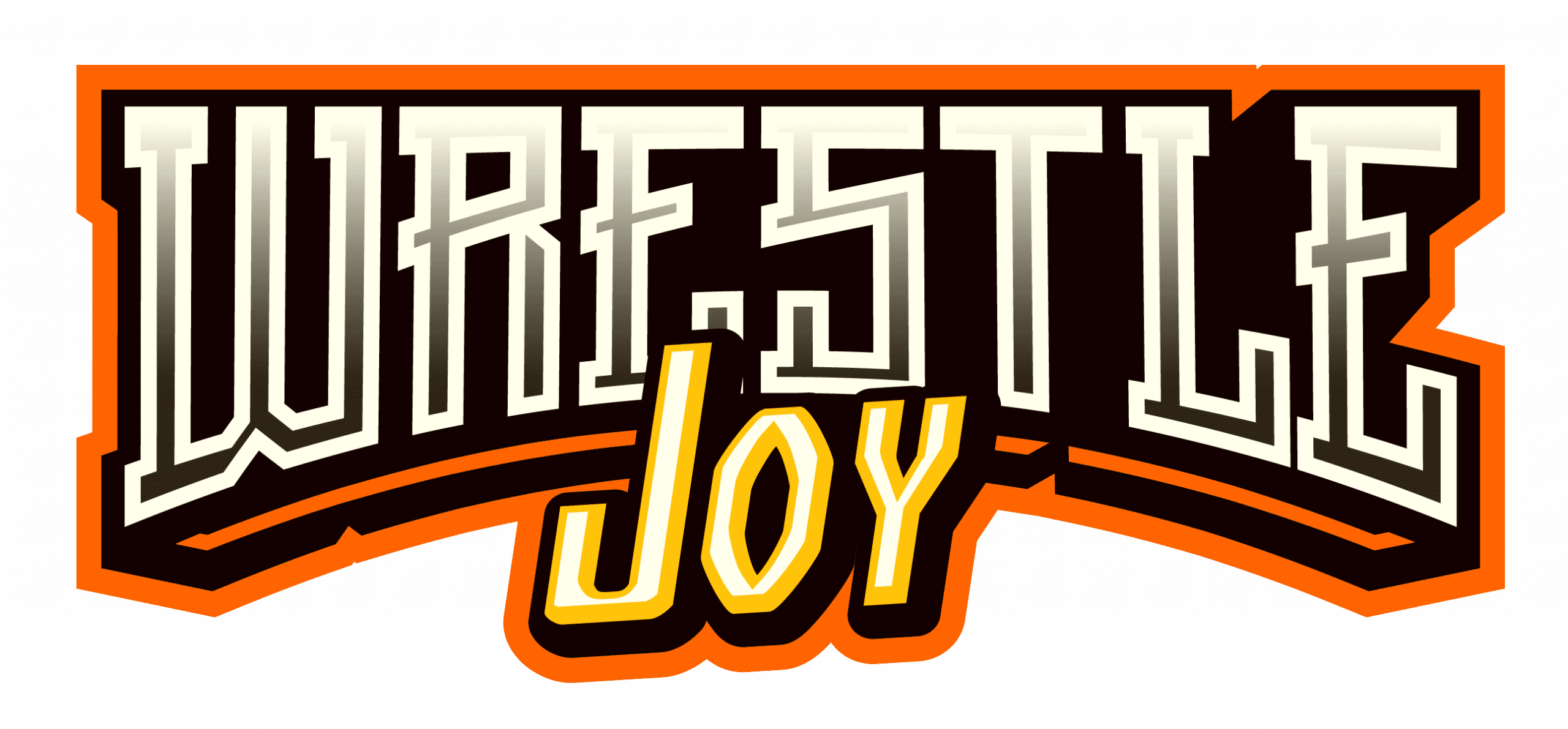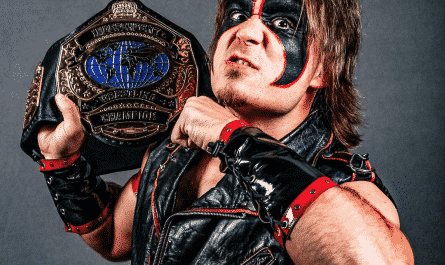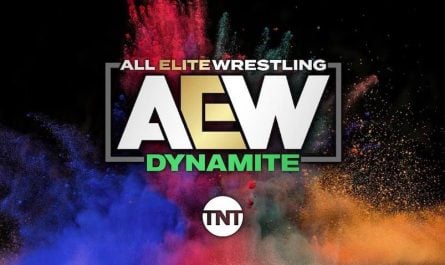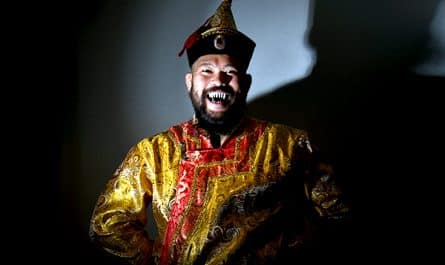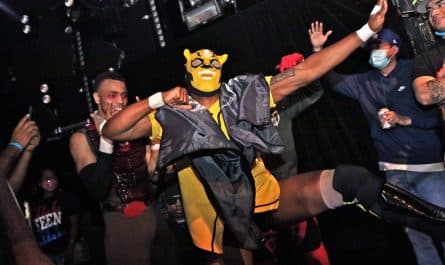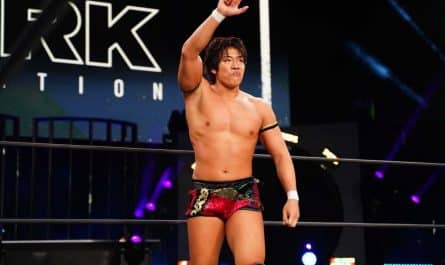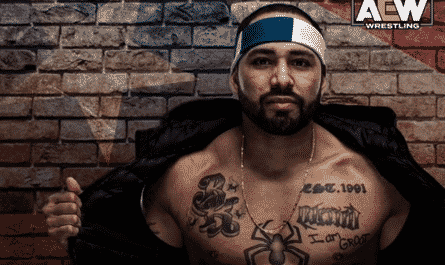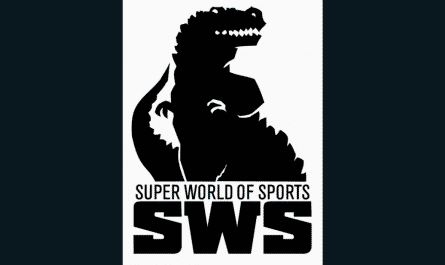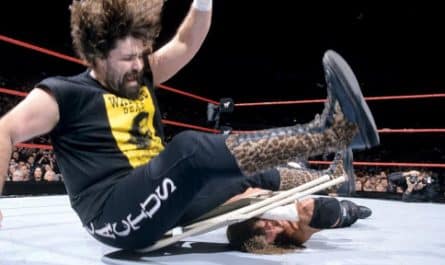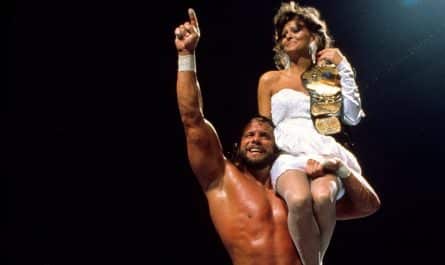The January 4th Tokyo Dome show has been more than New Japan Pro Wrestling’s equivalent to WrestleMania. It’s served not just as a platform to showcase New Japan but also as the best the nation has to offer the pro wrestling sphere. The first three Dome shows were presented as joint cards with NJPW and its American partner, WCW. In later Dome events, New Japan would share the stage with All-Japan, Pro Wrestling Noah, Zero-1, TNA, and CMLL. Last year, AEW World Champion Chris Jericho and Jon Moxley competed at the show now known as WrestleKingdom.
However, in 1996, one of the most successful inter-promotion rivalries reached its apex at the January Dome show. Nubohiko Takada represented the UWFi challenged IWGP Champion Keiji Muto. With 54,000 ravenous fans inside the Egg Dome and a $5,000,000 gate, WCW’s Eric Bischoff saw first-hand what a well-timed, reality-based angle could do for business. It’s essential to look back on one most successful stories in pro wrestling history on its twenty-fifth anniversary.
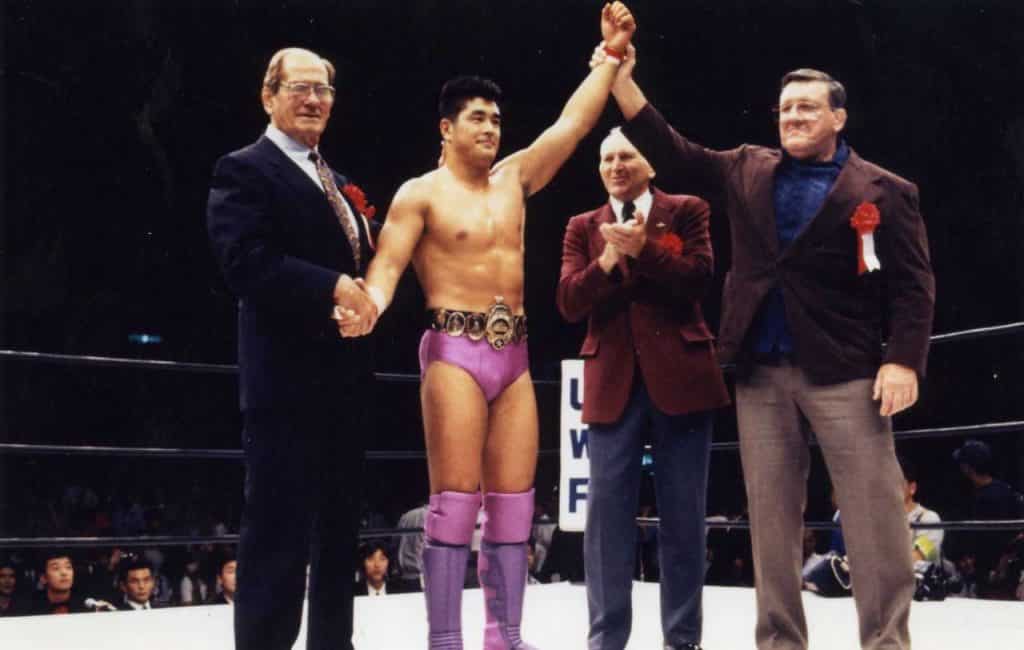
The roots of what would become the New Japan/UWFi rivalry stretch back to the death of the legendary Rikidozan. When the man who brought pro wrestling to Japan in the 1950s died, the sport’s future lay with two of his best students: Giant Baba and Antonio Inoki. Both men possessed very different ideas on the nature of pro wrestling. Baba’s preference for US-style, narrative-based, grappling-style emphasizing pinfalls over submissions became the backbone to the King’s Road Style of All Japan Pro Wrestling. In contrast, Inoki’s martial arts background stressed his preference for strikes and submissions to form the Strong Style of New Japan. However, that fundamental split, the very idea that pro wrestling can be reinterpreted, influenced the decisions of the next decade in Japa
In 1984, Satoru Sayama, who marveled crowds in the East and West as Tiger Mask, decided that his work, which was heavily influenced by Mexican Lucha Libre, wasn’t real enough. Sayama believed Strong Style needed to evolve and created Shooto Style worked MMA. Along with Akira Maeda, Yoshiaki Fujiwara, and Takada, they helped found the Japanese version of the Universal Wrestling Federation (not to be confused with either the Bill Watts or Herb Abrams promotions of the same name).
The promotion got off to a solid start, though Maeda and Sayama’s rivalry turned real quickly. Matches between the two broke into legitimate shoots, ending after Maeda kicked Sayama in the groin. Maeda was suspended and Sayama, disenfranchised with pro wrestling, retired. The original UWF fizzled away, and most of its roster went back to New Japan.
Four years later, Maeda again saw himself at the center of controversy during a six-man tag match with NJPW booker Riki Choshu. While Choshu had Osamu Kido in his Scorpion death lock (Sharpshooter), Maeda kicked him in the face, shattering Choshu’s orbital bone. Though the spot was planned, the match broke down, with Choshu attacking Maeda. Both Maeda and Choshu were legitimate fighters.
The year prior, a visibly drunk Andre the Giant refused to sell for Maeda, who proceeded to legitimately kick the Giant’s legs until he could no longer walk. Choshu, a highly decorated amateur wrestler who won a spot on the 1972 Japanese Olympic Freestyle Wrestling team, was denied because of his Korean heritage. Choshu did wrestle at the ’72 Games for South Korea but was disqualified from the tournament.
The incident led to Maeda’s suspension and eventual firing from New Japan. Again with Takada, he reformed the Newborn UWF in 1990. With Maeda as the top star, the UWF would host its own Tokyo Dome event, selling more the 60,000 tickets. The Newborn UWF also featured the returning Fujiwara and his top students Minoru Suzuki and Masakatsu Funaki. Though the Newborn UWF was popular, the Japanese economic downturn of 1990 and Maeda’s refusal to work with other promotions, namely Genichro Tenryu’s SWS, led to the end of the Newborn UWF.
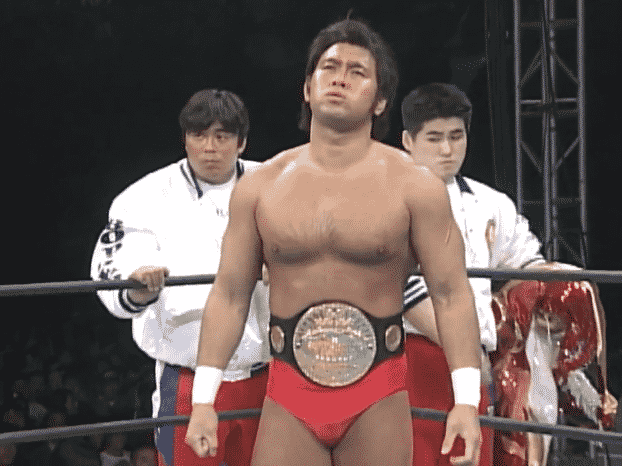
Instead of returning to New Japan, under the direction of Takada, a new UWF, this time called the Union of Wrestling Forces International (UWFi), was born a few months later. With Maeda out of the picture, having gone to fledgling MMA group RINGS, the new promotion was free to seek its own identity. The UWFi hired famed catch wrestling trainer Billy Robinson to coach at the UWFi Snakepit. They brought Danny Hodge in to judge matches. 6x NWA Champion Lou Thesz allowed the promotion to use his physical belt as its own Real Pro-Wrestling World Heavyweight Championship. Takada won the inaugural World title over top heel Gary Albright in 1992.
Takada, a handsome competitor who would become a media darling in Japan, would call out Mitsuahru Misawa (All Japan) and The Great Muta (New Japan) as “fakes.” Though UWFi was also a worked promotion, the company had an air of legitimacy that helped it stand out from its competition. In 1993, the UWFi presented a pay-per-view headlined by WCW World Champion Big Van Vader (competing as Super Vader), losing to Takada with an armbar.
By 1995, the shine had worn off the UWFi, with Albright leaving for All Japan and Vader focusing on the US and New Japan. Desperate, Yoshi Anjo went to New Japan and proposed the co-promotion. Riki Choshu, still the NJPW booker, agreed so long as he controlled the story direction. Takada and the stars of the UWFi made a shocking return to New Japan, challenging the promotion to a series of matches to see which style, not which company, was truly the best.
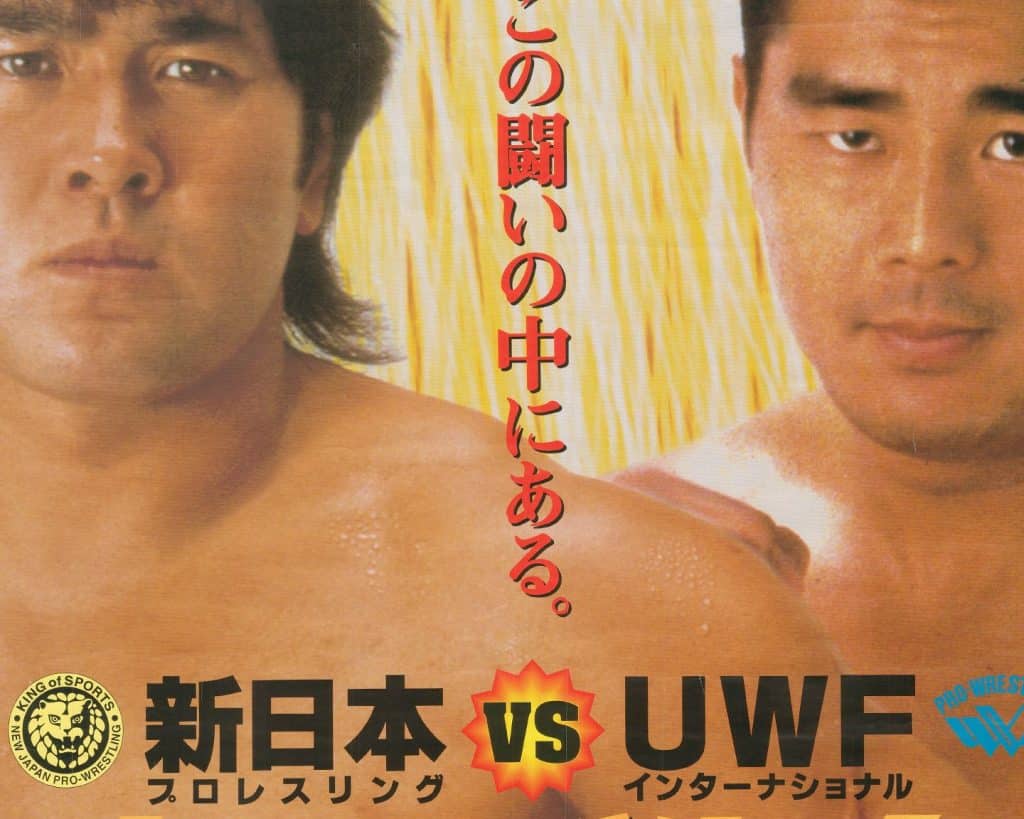
The Tokyo Dome played host to the first event on October 5th, 1995. A stellar undercard of inter-promotional matches featuring Takashi Iizuka vs. Yoshihiro Takayama, Jushin Thunder Liger vs. Naoki Sano, Kensuke Sasaki vs. Masahito Kakihara, Choshu vs. Yoji Anjo. The main event pitted Takada and one of the men he spent years calling out, the IWGP Champion, Keiji Muto. The October 5th show drew a record 67,000 fans to the Dome to watch a show that would be a real clash of styles. While the UWFi faction collected some wins on the card, the night belonged to Muto, who used a figure-four leg lock, an overt pro wrestling hold to defeat Takada. As the booker, Choshu made the statement that Strong Style was the superior style.
The event was such a success that Choshu and New Japan kept the program rolling into the annual January 4th show. The second Dome show again featured inter-promotional cross-style matches and a vicious bout between Vader and Inoki. While the program between NJPW and UWFi was making both companies money, Choshu and his long history with the style advocated by the long-departed Maeda needed to make a statement during his match with Kakihara. Choshu gave Kakihara very little offense and refused to sell the majority of Kakihara’s kicks. At one point, Kakihara kicks Choshu in the face, but the booker doesn’t budge. To no surprise, Choshu won with the Scorpion and once again proclaimed, Strong Style is superior.
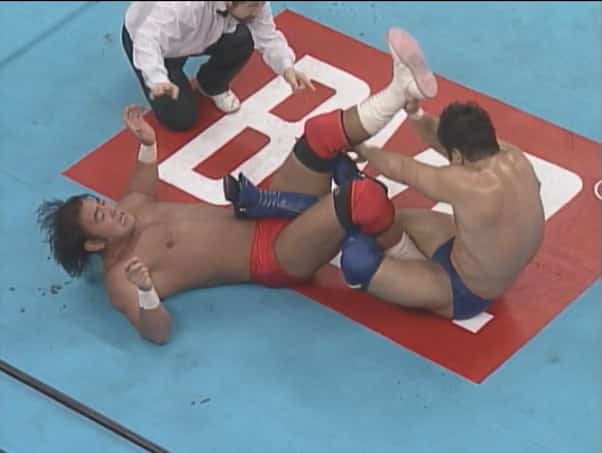
In the minds of most fans, it was a forgone conclusion that Muto would again defeat Takada. The match was a gripping battle, showcasing the high points of both competitors’ and companies’ warring philosophies. The story of the match was Muto working to defeat Takada with the figure-four again. At the same time, Takada fought to secure a heel hook, a legitimate fight-ending move seen in modern MMA. To the surprise of the entire crowd, Muto submitted to the heel hook. Nobuhiko Takada, the Shooto invader, was the new IWGP champion. In the aftermath, Takada challenged former champion Shinya Hashimoto.
New Japan and UWFi brought the inter-promotional rivalry back to the Tokyo Dome in April of 1996, the third Dome show in six months. This time, Hashimoto defeated Takada, finally vanquishing the invading force and proving once and for all that Strong Style was the best style. The UWFi would try a similar angle with Tenryu’s WAR promotion later in the year, but the program with New Japan devalued the UWFi name to the point where the company folded in late 1996, months after playing in one of the most significant angles in puro history.

New Japan would use the invading force troupe numerous times over the years, but never to the level of the UWFi invasion. As modern fans clamor for American-based companies like AEW and Impact or even AEW and New Japan to have similar invasion stories, fans miss what made this angle so special. Because Japanese promoters to this day question the very nature of what pro wrestling should be, multiple companies have been allowed to develop their own identities. DDT, Noah, Big Japan, and DragonGate are all very different promotions with very different principles. These fundamental differences allow fans to ask how these potential crossovers would look. In Japan, these aren’t battles about corporate letters. They’re about philosophy and tradition. They ask the fans to define the question of “what is pro wrestling?” That’s why this would be so hard to replicate a similar angle in the US. It is fun to imagine.
